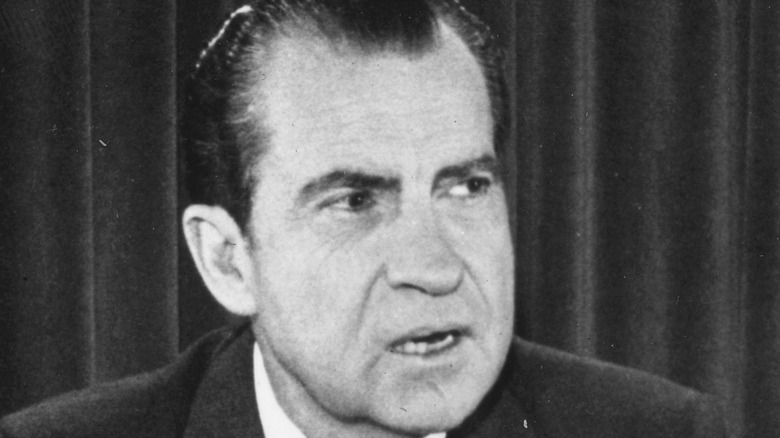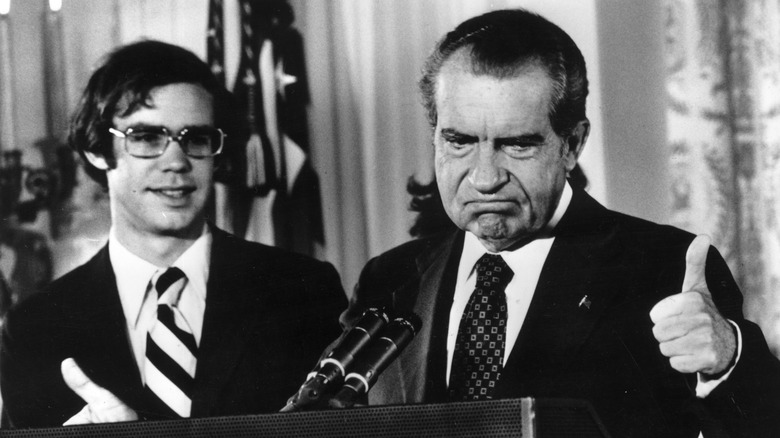The Truth About Richard Nixon's Assassination Attempt
Richard Nixon's presidency was one of the more infamous and controversial in American history, as the former California senator's corruption was revealed to the world, leading him to become the first and only president to resign. The administration was accused and found guilty of breaking into their rival party's offices and subsequently covering up all involvement, with the president himself lying about any knowledge of the wrongdoing. Nixon had his critics before the Watergate scandal broke out, but one man took his disgruntled attitude to the next level.
Via the L.A. Times, February 22, 1974, saw an unemployed former tire salesman named Samuel Byck try to hijack a plane with the sole intention of crashing it into the White House. Of course, he would be unsuccessful, not even leaving the runway, but his attempt would take the lives of two others and eventually his own. The failed assassination attempt was dramatized in the 2004 Sean Penn movie "The Assassination of Richard Nixon."
Samuel Byck told the media what he was going to do
Samuel Byck was a failed businessman who blamed his failings on the politics of the 37th president (via History on the Net). The Philadelphia man was inspired by other killers, such as Mark "Jimmy" Essex, who had shot and killed nine people in New Orleans with a sniper rifle and had the words "Kill pig Nixon" on his apartment wall. Less than a week before his attempted assassination, a man named Robert Preston landed a helicopter on the lawn of the White House, providing further inspiration.
Byck, who had been investigated two years prior for threats against Nixon, developed "Operation Pandora's Box." The former salesman wanted the plane to take off and fly toward DC, where he would then kill the pilots and fly the plane himself into the White House. He recorded the details of the plan and sent tapes out to various media outlets and public figures. Armed with a pistol and a suitcase full of gasoline, Byck shot and killed a security guard and forced his way onto a flight. He instructed the pilots to take off, but they were unable to. Byck shot both of them, killing the co-pilot. Police shot and wounded Byck, who turned his gun onto himself and committed suicide.

